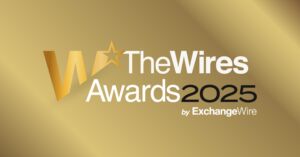Premium Publishers – Islands of Truth in a Sea of Uncertainty: Q&A with Jeremy Makin, Newsweek
by Lindsay Rowntree on 4th May 2017 in News

The World Media Group (WMG), a strategic alliance of ten of the world's leading premium media brands, recently commissioned analysis to assess the overall performance of WMG inventory during Q3 2016, in response to growing demand from advertisers for better viewability performance. The research, carried out by Moat, highlighted some interesting results, especially around desktop video and mobile display: desktop videos seen on WMG inventory achieved viewability rates 21% higher than average against the industry viewability standard of an ad being 50% viewable for two seconds during this period; and mobile display ads achieved 40% higher viewability rates, with 43% more interactions. ExchangeWire speak with Jeremy Makin, commercial director of Newsweek & International Business Times, a WMG member, about whether these positive results were in line with expectations and how they can help fly the flag for premium publishers.
ExchangeWire: The analysis shows some impressive results. Which stats really stood out for you?
Jeremy Makin: Two things really stood out for me in these results. Moat's typical publisher clients (whose aggregate inventory is analysed quarterly and used to derive the Moat benchmark) are, by their very nature, going to be a cut above the norm when it comes to viewability and IVT (invalid traffic) levels given, after all, that they are investing in analytics tools. So, for me, perhaps the most impressive thing about the results is that on every count (viewability, in-view time, interaction rates, etc.) World Media Group members outperformed these benchmark publishers and, in doing so, truly illustrate the deep link between premium sites, with their quality content and deep reader relationships, and the key metric of ad engagement.
In addition, in an age when VOD is booming, and consequently all publishers are investing more and more in video production, the stats here are super strong, especially the crucial AVOC (audibility and viewability on completion) metric and the tougher GroupM agency benchmark (of 100% viewable for half the video duration). Clearly quality again cuts through, driving consumer attention.
Did the results surprise you? One would expect, or at least hope, that ad campaigns do perform better against trusted, quality journalism. So what was the importance of this study?
I think for a long time we've all believed that advertising that runs in trusted, quality editorial environments, where readers have a strong connection to and engagement with the content and brand, would outperform advertising running elsewhere. It was, therefore, great to have this verified in such a robust way by an independent, third-party, trusted source in the attention/viewability space. The advertising world is increasingly dominated by tech-driven buying, by data analytics, and by ever more sophisticated algorithms. Against this backdrop, it’s reassuring to see that the link between 'real news' and the consumer isn't broken and that advertisers can still derive substantial benefits from working with premium publishers.
Do you think having the data behind strong brand engagement to back up the cachet of high-quality journalism will make advertisers look at premium publishers differently?
That’s the hope, at the end of the day. Obviously we can't turn the clock back, nor should we want to try. There are media owners out there, like Google and Facebook, that offer advertisers reach and data that we, as premium publishers, can only dream of – and that will continue to attract the lion’s share of advertising budgets. What super-premium sites, like those of the World Media Group members, offer is something a bit different and a bit special. The opportunity to reach and truly engage with an up-market audience of influencers and opinion leaders.
The era of fake news has brought a lot of mistrust into publishing. Is it more difficult for premium publishers to prove their value?
If anything, I think the opposite. Premium publishers, like those of the World Media Group, provide consumers with 'islands of truth in a sea of uncertainty'. The volume of fake news is growing and consumers are finding it increasingly difficult to distinguish fact from fiction. As a result, those sites that they can trust, where stories are well researched and written, will become more popular and more influential. The upsurge in traffic experienced by many of the World Media Group sites during the recent US Presidential Elections was testament to this.
With brand safety and viewability featuring so strongly on advertisers’ radar of late, do you expect studies like this one to encourage them to move out of the open marketplace and focus more on the premium environment?
The 'open marketplace' and the 'premium environment', as you put it, offer very different things to advertisers. The open marketplace offers huge scale at a very low price point, but with this comes inevitable and frequent compromises in environment, context and, consequently, in ad effectiveness. You can't have your cake and eat it, to borrow Boris' now famous Brexit expression. The attraction of the premium World Media Group sites lies in their ability to offer a tailored brand-safe environment, a high-quality and engaged audience, and substantial uplifts in advertising cut through and impact. Ultimately, offering all advertisers need to balance cost and reach to achieve the best possible ROI. Studies like this should encourage advertisers to balance their use of the open marketplace with their enhanced use of premium sites.
The sad fact is that cost plays such a huge factor in advertisers’ ad strategies. Premium can often be overlooked for much cheaper, and sometimes even nefarious, inventory to bring down the CPMs and hit KPIs. What would your advice be to advertisers and how would you recommend they justify the premium environment?
Advertisers need to take a balanced, sustainable, and value-driven approach to ad strategy, delivering the best possible results yes, but over the medium- and long-term, as well as the short. Advertisers and their agencies do, I’m sure, understand that a short-sighted drive to 'buy cheap', with all of the inherent risks, may deliver a quick win. However, it may also end up causing collateral brand damage and can, consequently, prove substantially less effective in the long term.
The Moat stats are proof of the power of premium editorial environments and testify to their inherent value to premium advertisers. The research shows that World Media Group sites deliver the much-prized combination of supreme levels of ad engagement, amongst very real and highly influential, upscale audiences – and all within a high-quality and trusted editorial environment. It’s this that advertisers are beginning to realise offers them true value for money, delivering long-term gains in brand equity and sustainable ROI.








Follow ExchangeWire